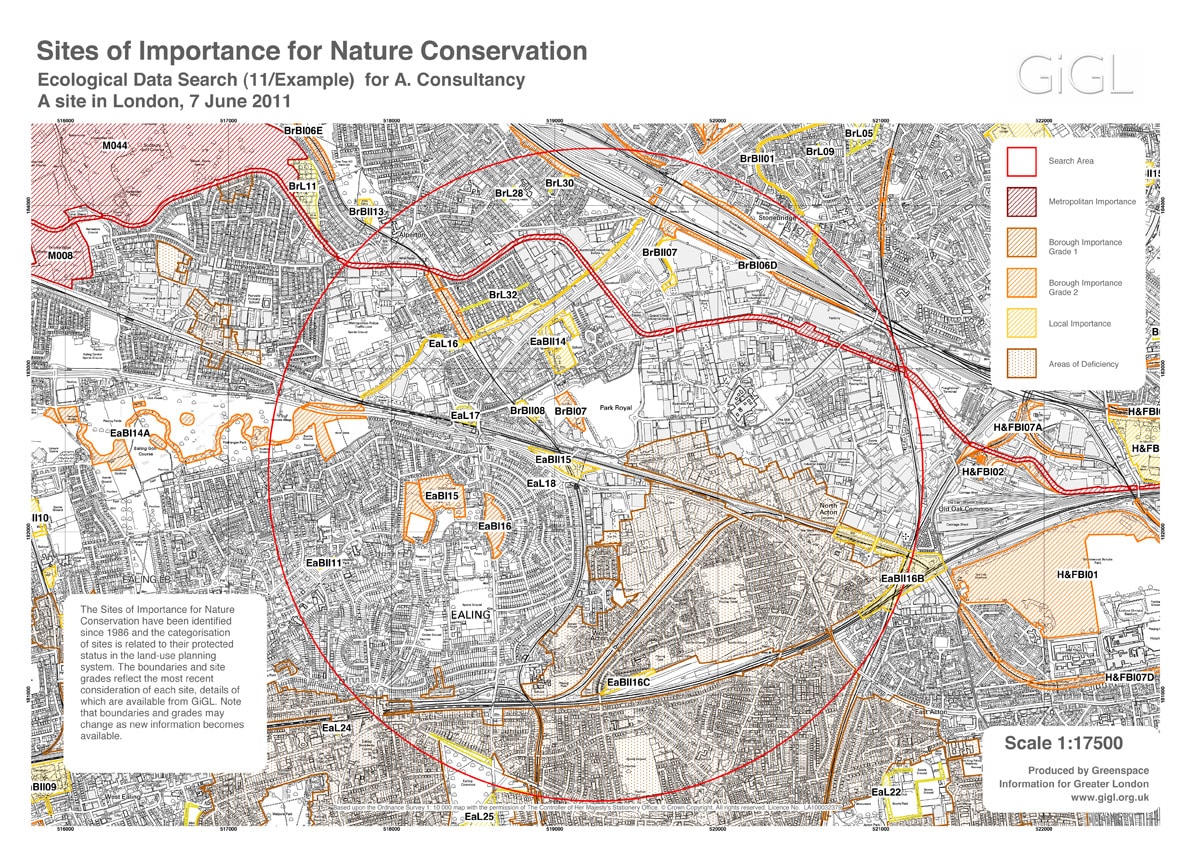
Providing ecological data to private and public sector organisations is one of the core functions of any local records centre. April 2011 saw the launch of GiGL’s new data search service. Our data search system and the content of our reports has been significantly improved in line with GiGL’s aim of enabling evidence-based decision making.
This service is primarily designed to help those seeking comprehensive biodiversity and open space information within Greater London. Users are often environmental consultants who may not be based in London and therefore rely on GiGL to provide not only protected species information, but also other information that is pertinent to London. For example, data that we provide about open spaces will include information about Metropolitan Open Land which is a planning designation unique to London.
There are several significant improvements to the contents of the report.
What has changed?
The largest noticeable changes to GiGL’s reports are the additional content provided, and electronic delivery to customers.
But behind the scenes, there’s a lot more to it. A new streamlined process within the search system means GiGL can standardise the time taken to produce the reports, which is now reflected in the price of the service. Local records centres like GiGL are the most cost-effective ways of accessing ecological data, both financially and in the time they take to create – even more so with these improvements.
GiGL manages several distinct datasets and, in accordance with our accessing data policy, our fundamental principle is always to make all records available as appropriate. This is one of the reasons new datasets have been added to the report and we will be adding new datasets as soon as they are verified and of a high enough quality.
For the purpose of the reports the datasets have been divided into three categories: species, green infrastructure, and designations. A standard report will contain information from all three categories.
Species category
The species category includes an entirely new dataset from the London Invasive Species Initiative (LISI). LISI is part of the London Biodiversity Partnership and encourages better co-ordination and partnership working to prevent, reduce and eliminate the impacts caused by invasive non-native species across the city. The report will now contain a list of a number of invasive species present in London for which action, monitoring or research is needed.
London has a rich and diverse wildlife. Most non-native species do not pose a threat to biodiversity. However, there are some invasive non-native species which are a cause for concern, some of which are already threatening the value of London’s natural environment.
As an international city London has a higher risk of new non-native species appearing and becoming invasive than other regions.
There is also a new table in the report for confidential species. Some records are marked as confidential by their originator or have reporting restrictions on them.
For example, certain bird records are restricted during the breeding season. Rather than not reporting them at all, GiGL will include a species alert table that highlights the fact that the species has been recorded in the search area, but without the geographic information. A second search request with a detailed site plan can be submitted to determine whether any confidential species are present in the exact location of interest.
Green infrastructure and designation categories
The major change in the green infrastructure and designation categories is the improved SINCs dataset (sites of importance for nature conservation). GiGL has recently been given responsibility for managing this dataset and our first task was to update it to reflect changes that boroughs had made to their SINCs. The improved dataset is illustrated quite dramatically on our new-look maps.

These two categories have a number of exciting datasets lined up for inclusion that will add to the local expertise that GiGL is already sharing.
All the maps that accompany the reports have been given a new and cleaner look which is more consistent with the rest of the GiGL services. Interpretative text has been updated or added to the maps to help clarify where the data has originated.
All in all, the GiGL team have worked hard on the revamped data search service because up-to-date reliable environmental information for London is important for decision making and to ensure compliance with environmental legislation.
